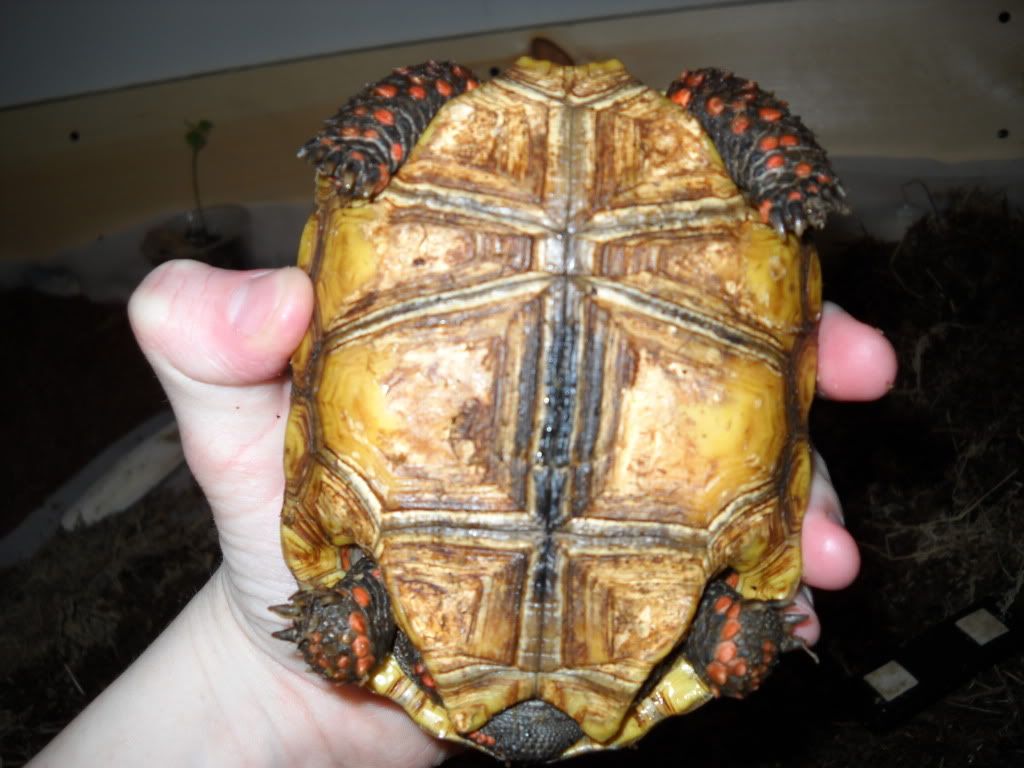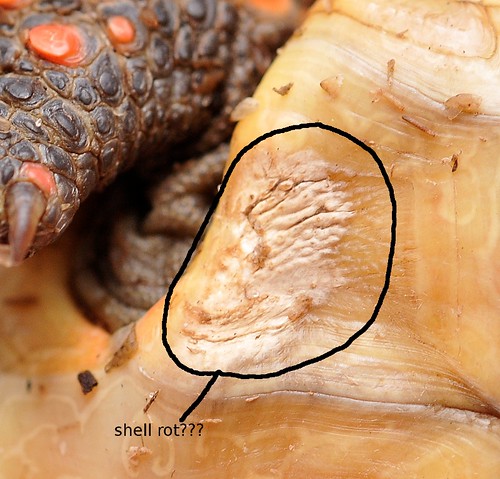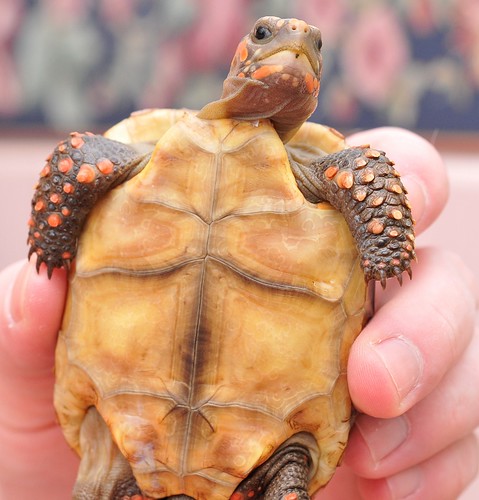This is Lucy i "rescued" her from Petco. I think she might have shell rot...



emysemys said:Looks like it to me. Can't really tell if it's old or still rotting. Scrub it good with a brush one time with Betadine, then after that every day clean it with Nolvesan (Chlorhexidrine). It would be good to keep her dry for a few days until you're sure you have arrested its progress. By that I mean on a dry substrate. You can still soak her.

